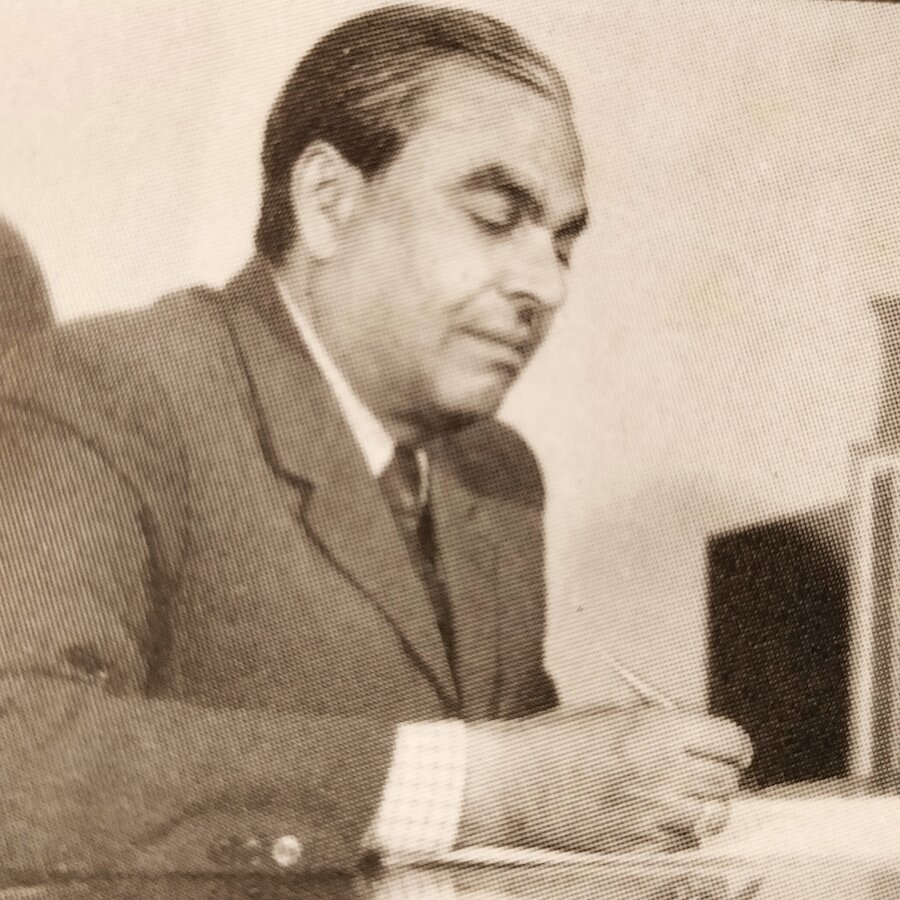Angkor Wat & Cultural Ties With India-PRINT
by K.M. Srivastava
Considerations on Angkor and architectural preservation by a leading Indian archeologist.

- Format
- paperback
- Publisher
- Gyan Books, Delhi
- Edition
- facsimile, 2006
- Published
- 1987
- Author
- K.M. Srivastava
- Pages
- 143
- ISBN
- 81-85016-19-4
- Language
- English
This report of an exploratory mission for the preservation of Angkor commissioned by the Indian governement was authored by Shri K.M. Srivastava, a leading Indian archeologist. While several chapters give precious information about the way architectural conservation was considered in the 1980s, it is also an important document reflecting the Indian approach to the Khmer civilization.
In effect, the author analyzes the architectural significance of Angkor Wat and surrounding structures with his profound knowledge of Indian culture and history, giving us a ‘reading’ of the monuments that departs from the usual rationalizations suggested by Western scholars and researchers.
The explanation for the four-faced towers so characteristic of the Bayon and Banteay Chhmar temples is particularly stimulating. These structures, claims the author, reflect a distinctively Indian outlook on sexuality and symbolic representations of the sexual pulsion.
First, the author quotes the Brihatsamhita:“The entire universe, right from the creator (Hiranyagarbha) to the smallest worm, is born of the union of male and female. So why should anybody feel ashamed of it, when even the Lord Siva was forced to have four faces on account of His longing to have a look at a maiden?”. And he adds: “The above story refers to an incident in which the celestial courtesan (apsara) Tilottama was perambulating the Lord Siva and Parvati was sitting in his lap. The lord was so much captivated by the charming personality of the apsara that he developed a desire to have a full glimpse of her. The Lord at the same time did not dare to annoy his spouse Parvati on being detected. He, therefore, assumed four faces to have a look at the damsel’s beauty”.
On the technical aspect of the projected restoration — which was later criticized by international experts –, Indian specialists did not hide their disagreement with EFEO methods before the civil war, for instance this remark by Prof. K.S. Sankaran: “In the southern portion of the third corridor the French had removed the columns, dome, slab etc. They had also provided at the foundation level a raft to support the interior row of columns. It is not clear how exactly they have carried out the repairs in the foundation. If the Archaeological Department of India is going to reconstruct the corridor by the assemblage of stones of the twelfth century a new stress field will be generated in the superstructure and the distress in the foundation and superstructure will be developed. A new pattern of cracks will appear depending upon the foundation treatment given by the French.” [p 126]
Foreword by Dr. Kapila Vatsyayan.
Tags: conservation, Indian influences, Bayon, four-faced towers, sexuality, architecture, Queen Mother Monineath, India
About the Author

K.M. Srivastava
Dr. Shri Krishna Murari Srivastava (21 Sept 1927, Allahabad, India) is a leading Indian archaelogist who led the Special Archeological Preservation Mission to Angkor from 1982 to 1991, and was credited with the discovery-identification of the lost town of Kapilavatsu, where Lord Buddha spent the first twenty-nine years of his life before renouncing the world.
Director General of the Archaeological Survey of India until 2010, he also worked in the area of the Aswan Dam (modern Egypt), in Bahrain, and in Cambodia.
He authored several books, including a Study in Protohistoric India and The Apsarases At Angkor Wat (1994), as well as various archeological reports such as Excavations at Piprahwa and Ganwaria. He took part in the famous excavations in the Indian city of Ayodhya (Uttar Pradesh State), near the Babri Masjid (Mosque).
